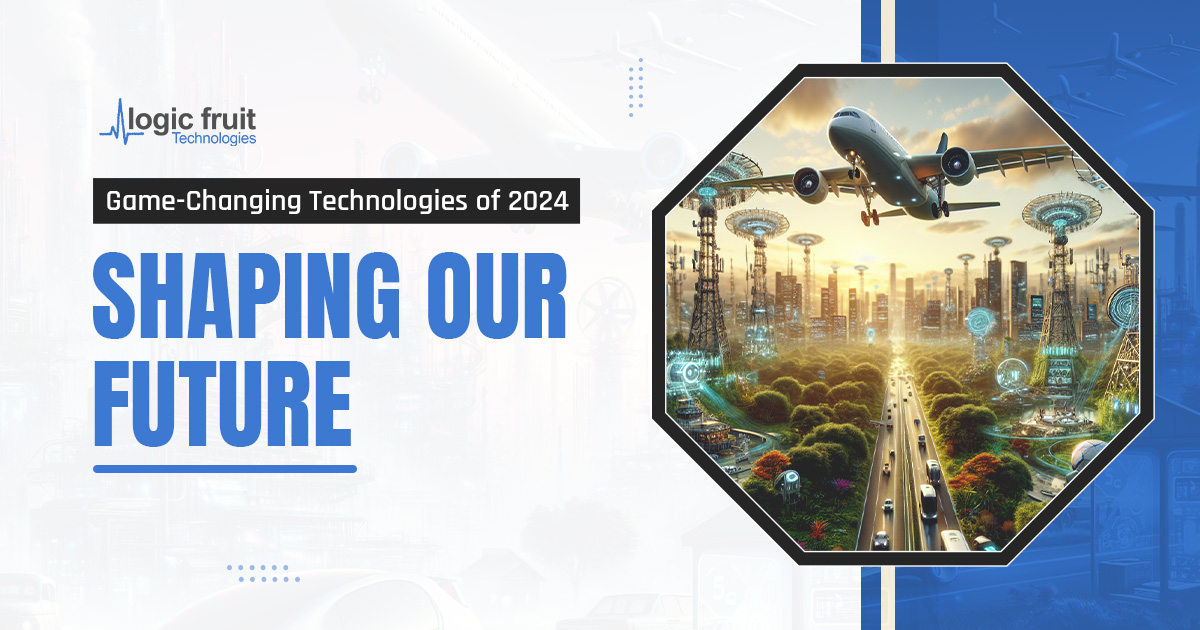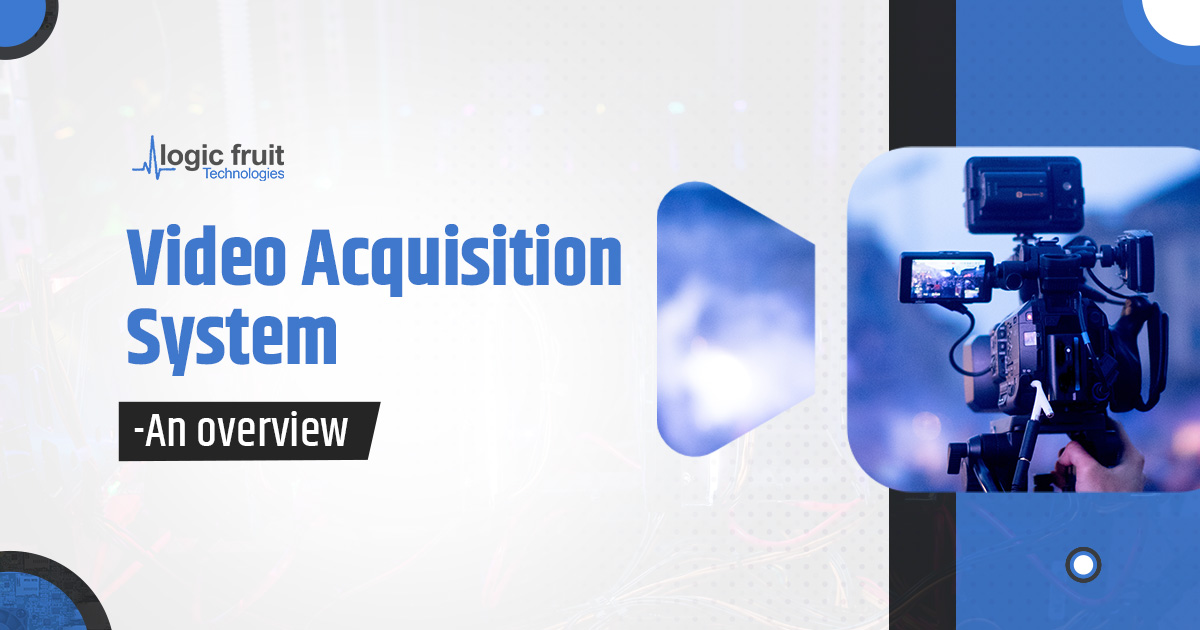Explore the FPGA market in Logic Fruit’s 2024-25 report. Gain insights on trends, forecasts, and key analysis for informed decision-making.
The field of Field-Programmable Gate Arrays (FPGA) is experiencing rapid growth and is attracting the attention of leading global players and investors. In the upcoming years, it is anticipated to keep growing.
FPGA technology is a popular option in many industries, including consumer electronics, telecommunications, automotive, and aerospace, since it provides an adaptable and flexible solution for developing and executing digital circuits.
For the duration of the forecast period, the field programmable gate array market is anticipated to rise due to the growing use of FPGA by the automotive sector for product differentiation.
There will be several chances for market participants to spend on research and development as the field programmable gate array (FPGA) sector is expected to grow at a higher CAGR globally over the projected period.
Logic Fruit Technologies has conducted extensive surveys on LinkedIn to gain valuable insights into the projected growth of the FPGA market for the year 2024.
In this blog post, we will be revealing the results of these polls and providing valuable insights into the anticipated trends and developments in the FPGA landscape for the upcoming year 2024-25!
Market Growth of FPGA (Field Programmable Array Gate) for 2024-25
GrandViewResearch predicts that the size of the global field programmable gate array (FPGA) market was estimated at USD 10.46 billion in 2022 and will increase at a compound annual growth rate (CAGR) of 10.8% between 2023 and 2030.
Throughout the forecast period, it is expected that demand for field programmable gate arrays will be driven by the increasing trend of their acceptance in the fields of network processing, security, and deep packet inspection.
It’s now time to disclose the findings of our Logic Fruit FPGA Polls. Without further ado, let’s examine the outcomes.
Embark on a journey through the dynamic world of Field-Programmable Gate Arrays (FPGAs) as we unveil Logic Fruit’s annual report for the FY 2024-2025.
This comprehensive analysis offers unparalleled insights into the global landscape of FPGA innovation. With meticulous research and decoding of statistical trends, we present a panoramic view of market dynamics, technological advancements, and transformative strategies shaping the industry.
Join us as we unravel the complexities and unveil the results that define the future of FPGA innovation.
FPGA Global Insights
The markets for FPGA evaluation boards are anticipated to expand significantly in North America (NA), Asia-Pacific (APAC), Europe, the USA, and China.
To give customers a better knowledge of the product, the Field Programmable Gate Array market report places special emphasis on important global regions.
FPGA use in the region is noteworthy in industries like industrial automation and telecoms.
As a result, Asia-Pacific emerges as the clear winner with an overwhelming majority of over 67% in 2024 for its strong economic development, technological superiority, and tactical placement within the global digital scene.
North America‘s share of the FPGA market is in second place with 14%. The field programmable gate array market is expected to increase regionally due to the continued expansion of major companies committed to the progress of the semiconductor industry.
It is still substantial despite its relative lag behind Asia-Pacific, which is not surprising given the region’s long history of technological innovation and superior R&D.
A sizeable share of the FPGA market is captured by Europe, demonstrating the continent’s dedication to industrial innovation and technical progress.
Despite their smaller share, the Middle East and Africa‘s position in the FPGA market highlights the region’s increasing interest in and spending on cutting-edge technology.
FPGA Applications Insights
With its flexibility and agility, FPGA technology has the potential to completely transform conventional methods of hardware acceleration and computation.
Field-Programmable Gate Arrays (FPGAs) are versatile integrated circuits that can be configured and reconfigured to implement a wide range of digital circuits and functions.
Its applications cover a broad range of sectors, including healthcare, telecommunications, aerospace, and automotive, each with its opportunities and difficulties.
In this age of lightning-fast technology development, keeping an eye on industry preferences becomes critical.
The poll results show that the automotive industry is leading the way with 48% in 2024, The field programmable gate array market is anticipated to increase during the projected period due to the growing use of FPGA by the automotive sector for product differentiation.
Field programmable gate array (FPGA) market players will have plenty of opportunity to spend on research and development as the industry is expected to grow at a higher CAGR globally during the forecast period.
The aerospace and military industries trail closely behind with over 38%, Because they offer better integration, dependability, and low-power alternatives than conventional FPGAs, embedded field programmable gate arrays (FPGAs) are becoming more and more advantageous for the aviation and defense industries.
Growth in the military and aerospace industries is anticipated as a result of this trend.
Even though Telecom‘s percentage of the vote was lower, it still shows that more people are becoming aware of FPGA’s potential to improve network performance, due to applications such as data packet processing and optical transport networks, which are driving market expansion.
Service providers can increase bandwidth and build flexible networks that span several generations, from 3G to LTE and beyond, with the help of FPGAs, which is why this market is growing.

FPGA Technology Types Insights
Technology analysis has divided the market into segments according to features such as SRAM, EEPROM, flash, and anti-fuse, among others.
For several reasons, including the fact that flash-based FPGAs offer higher density and faster performance than conventional SRAM-based FPGAs, the flash-based technology is anticipated to increase significantly at a profitable CAGR throughout the projected period.
For applications like data center acceleration, AI, and machine learning that demand fast processing rates and minimal latency, these are the best options.
The SRAM-based FPGAs accounted for the largest market share with over 59% in 2024, Because of their excellent integration, reprogrammability, and versatility for a wide range of applications, SRAM-based FPGAs are becoming more and more popular.
Their innate speed makes high-speed data processing possible, allowing for high-performance and real-time computing, which propels the expansion of the market.
Flash-based FPGAs are anticipated to have the fastest growth rate 21% over the forecast period. The segment is witnessing high demand as major players upgrade their portfolios of FPGAs to cater to the growing demand from the expanding application base.
We also see smaller yet interesting examples of Antifuse FPGAs and EEPROMs. These findings indicate not just the dominance of FPGAs based on SRAM but also suggest interesting changes in the industry.

FPGA Logic Operations Insights
A CLB is the basic component of a field-programmable gate array. This logic cell can be configured or programmed to perform specific functions. Connected to these building blocks is the connecting block.
These parts include Flip-Flops, Look-up tables, and input/output (I/O) blocks.
Look-up tables (LUTs) dominated the market in 2024, capturing over 70% of the market share. Because they enable the creation of complex digital logic circuits, Lookup Tables (LUTs) are crucial for FPGA (Field-Programmable Gate Array) design.
One distinctive aspect of an FPGA is a lookup table (LUT). For any combination of inputs, a LUT holds a preset array of logic outputs: Widely used LUTs have four to six input bits.
Next Flip-Flops (FF) and Input/Output (I/O) blocks received honorable mentions. These observations shed light on the changing field of FPGA optimization in 2024.
FPGA Key Industries Insights
Field-Programmable Gate Arrays (FPGAs) are becoming versatile instruments with applications across a wide range of sectors as technology continues to evolve at a rapid rate.
The question of where FPGAs will succeed in 2024 is still relevant. To clarify this, we asked professionals in our LinkedIn survey, “Where will FPGAs shine in 2024?” for their thoughts.
This investigation explores the areas where FPGAs are predicted to achieve great advancements, influencing the direction of technology and creativity in the future.
According to the analysis, digital signal processing is the most popular option with over 59%, Although traditional digital signal processors (DSPs) are still used to analyze signals and aggregate data, hardware, and technology limits imply that Digital Signal Processing must be more agile to perform well in current facilities and systems.
Next, Biomedical Instrumentation with over 19%, About wireless body sensor networks, diagnostic imaging, electromedical segmentation, cardiac management, genomics/life science, hardware acceleration, architectures, and other areas, has grown to be a prominent area of study and application in the field of biomedical engineering.
Support for Device Controllers was also added, demonstrating the flexibility of FPGA in hardware interfaces. These observations point to a future filled with cutting-edge FPGA solutions in many industries.

FPGA Design and Architecture Insights
FPGA architecture and design has a great deal of room to grow in the rapidly developing field of technology.
Anticipating 2024, the incorporation of artificial intelligence (AI) and the Internet of Things (IoT) into FPGA systems becomes a crucial topic of conversation.
The findings indicate a strong expectation that the integration of AI and IoT will propel FPGA improvements by over 45%.
The integration of IoT and AI technologies across a range of applications is driving the FPGA industry. AI hardware is increasingly reliant on FPGAs, which power edge computing for low latency and localized decision-making.
FPGAs give the Internet of Things the computing capacity required to handle data from a vast number of linked devices.
The second place includes the gradual replacement of ASICs with 28%, Application-Specific Integrated Circuits (ASICs) are specially designed circuits for particular design requirements; FPGAs are not the same.
Compared to ASIC designs, FPGA designs are 35 times larger, 3.5 times slower, and consume 14 times more power. Consequently, only low-volume applications use FPGAs.
Next is the ongoing industry revolution, These FPGAs are versatile across many industries because of their high density, easy packaging, embedded multipliers, and enhanced memory capabilities, and also the role of tools in promoting the adoption of FPGA comes with the least votes.

FPGA Challenges Insights
In the ever-changing world of technology, where creativity is both the driving force and the challenge, the field of Field-Programmable Gate Arrays (FPGAs) is a testament to flexibility and adaptation.
Despite the advantages provided by FPGA-based prototyping, there are some significant hurdles to overcome.
The poll’s results indicate that respondents’ main worries were the time-consuming FPGA design process with over 42% because FPGA design has historically been a challenging and time-consuming procedure requiring extensive manual coding and specialized skills.
With high development costs of 24%, Hardware and development tools for FPGAs might be expensive.
Higher development costs may result from the need for specific knowledge and expertise in the design and debugging of FPGA-based systems and a power consumption of 24% is crucial, especially in battery-operated or energy-efficient applications.
Optimizing power design can be challenging due to resource utilization efficiency. Furthermore, thermal management shows up as a crucial factor.

FPGA Languages Insights
Applications for FPGAs range from embedded systems to digital art to industrial automation. Because of this, these devices may be programmed using a wide range of programming languages.
Engineers need to utilize a specific programming language to program an FPGA. While there are many programming languages for FPGAs, the four most widely used ones are IP-based design, System-level design, HLS, and Traditional HDL (VHDL/Verilog).
The views of the public emphasize The main languages used in FPGA work are traditional HDLs like Verilog and VHDL with over 74%, Engineers and designers utilize Verilog and VHDL as the two main hardware description languages (HDLs) to describe, simulate, and synthesize digital systems.
When creating field-programmable gate arrays (FPGAs), integrated circuits (ICs), and other digital hardware, these languages are essential.
Additionally, High-Level Synthesis (HLS) with 11% streamlines the traditional process of designing FPGAs using hardware description languages, presenting a more efficient and productive approach.
Following are system-level and IP-based designs, which show a variety of obstacles.

FPGA Development Boards Insights
FPGA boards serve as starting tools for FPGA-related design as well as being utilized for the initial assessment and development of FPGA-based products, operation verification of embedded application software, and IC evaluation and verification of digital circuits.
They come in a variety of features and levels of complexity, ranging from highly functioning specialized boards to ones that are easy for beginners to use.
It’s critical to choose an FPGA board that meets the project’s unique objectives and specifications.
We’re excited to share the poll results with you: With over 82% of the market, Xilinx Zynq UltraScale+ leads the way by fusing programmable logic and an ARM-based multiprocessor system-on-chip (SoC) into a single device that combines the flexibility of an FPGA with the power of an ASIC.
Attention is also drawn to With over 12%, Intel’s DE10-Nano offers a plethora of interesting application possibilities, including high-speed DDR3 memory, analog-to-digital capabilities, Ethernet networking, and numerous more characteristics., and Microchip’s SmartFusion2, and Lattice’s iCE40 UltraPlus plays a role in FPGA development boards.

FPGA Insight Amid ASICs & Microcontrollers:
Semiconductor devices known as FPGAs are reprogrammable to perform a wide range of digital circuits and tasks.
FPGAs provide flexibility and adaptability that enable designers to change the functionality of the device even after it has been created, in contrast to ASICs, which are fixed-function devices.
Because of this, FPGAs are a desirable choice for applications requiring expected design modifications, proof-of-concept development, and quick prototyping.
Reprogrammability with over 68% is one of the main advantages of FPGAs, enabling designers to change the functionality of the device after it has been deployed.
This functionality makes it easier to update or fix hardware faults without having to physically replace the device, as well as to prototype quickly and design iteratively.
Parallel processing with over 15% efficiency enables FPGAs to perform well in high-speed data processing applications including digital signal processing, image processing, and encryption. FPGAs are equipped with many programmable logic blocks that operate independently and concurrently.
Cost-effectiveness and lower power consumption, FPGAs offer lower NRE costs than ASICs, which demand a large upfront investment in design and production.
Because of this, FPGAs are a more cost-effective option for low-power consumption or applications with limited resources.

Conclusion:
Now that the blog has concluded, we hope you have gained a great deal of knowledge and a prediction regarding the growth of FPGA in 2024.
With consistent growth anticipated in the upcoming years, the FPGA market appears to have a bright future. FPGA growth will continue to be fueled by the growing need for high-performance computing, AI, ML, and IoT applications in a variety of industries.
The market will expand even more as a result of technological developments including the integration of FPGAs with CPUs and GPUs, increased power efficiency, and the creation of high-level synthesis tools.
The FPGA market has a promising future ahead of it due to expanding applications and ongoing innovation that will fuel future expansion and growth.













